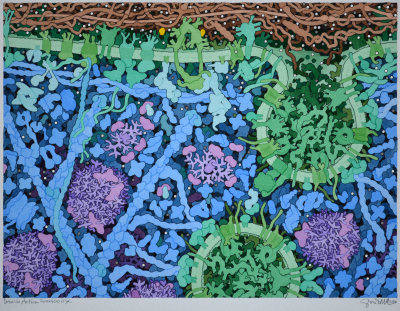Molecular Landscapes by David S. Goodsell
Insulin Action, 2016
Acknowledgement: Illustration by David S. Goodsell, RCSB Protein Data Bank. doi: 10.2210/rcsb_pdb/goodsell-gallery-014
This painting shows the binding of insulin (yellow) to insulin receptors and the processes that are triggered. It was created as part of the yearly focus on diabetes at PDB-101. The painting is featured in the Insulin and Diabetes poster that illustrates how structural biology has revealed the details of insulin signaling and how this knowledge is being used to create new and better treatments for diabetes.




